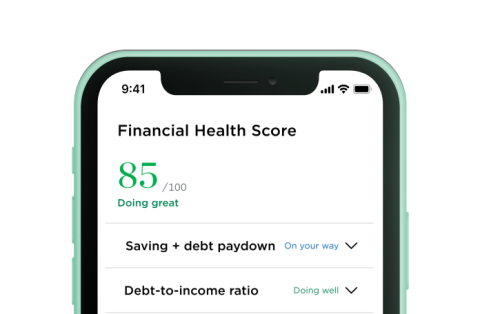How to Open a Roth IRA: A 6-Step Guide for Beginners

Many or all of the products featured here are from our partners who compensate us. This influences which products we write about and where and how the product appears on a page. However, this does not influence our evaluations. Our opinions are our own. Here is a list of our partners and here's how we make money.
The investing information provided on this page is for educational purposes only. NerdWallet, Inc. does not offer advisory or brokerage services, nor does it recommend or advise investors to buy or sell particular stocks, securities or other investments.
A Roth IRA is a true gift for retirement savers. While you might not get the tax benefit now, contributions and earnings in the account grow tax-free. In addition to tax-free withdrawals, Roth IRAs also don't have required minimum distributions, so you can choose to leave the money in the account to keep growing after you've retired.
Need to back up? Roth IRA: Definition & How It Works
If you qualify, opening a Roth IRA could be the first step toward supercharging your retirement savings. Here's how to set one up.
» Ready to get started? See NerdWallet's list of the best Roth IRA providers
1. Figure out if you are eligible
Roth IRAs have income limits, which can reduce or eliminate your ability to contribute to a Roth.
For 2024, the contribution limit is $7,000 for those under 50 and $8,000 for those 50 and older if your modified adjusted income is below $146,000 (single filers) or $230,000 (married filing jointly).
At incomes above that, the amount you can contribute begins to shrink. Roth IRA contributions are not allowed at modified adjusted gross incomes of $161,000 for single filers and $240,000 for those married filing jointly.
If your income exceeds those limits, the backdoor Roth IRA strategy lets you open a Roth by converting money from a traditional IRA.
NerdWallet rating 4.9 /5 | NerdWallet rating 5.0 /5 | NerdWallet rating 4.2 /5 |
Fees $0 per online equity trade | Fees $0 per trade | Fees $0 per trade |
Account minimum $0 | Account minimum $0 | Account minimum $0 |
Promotion None no promotion available at this time | Promotion None no promotion available at this time | Promotion Get up to $700 when you open and fund a J.P. Morgan Self-Directed Investing account with qualifying new money. |
2. Decide what type of investor you are
If you're a “do-it-yourself” investor, choose a brokerage.
You can open a Roth IRA at an online broker and then choose your own investments. You can build a diversified portfolio with just three or four mutual funds that are in different asset classes. When comparing brokers, look at trade commissions and the investment fees of their offered funds (also called expense ratios).
If you're a “manage it for me” or hands-off investor, choose a robo-advisor.
If you’d rather have someone pick an investment portfolio for you, you can open your Roth IRA at a robo-advisor. Robo-advisors are online services that build and maintain a diversified portfolio for you. You pay a small fee for the service, but their fees generally are far lower than a human financial advisor.
3. Choose how much you want to invest
How much do you need to open a Roth IRA? While there generally isn’t a fee for opening a Roth IRA, there may be other costs and requirements depending on your provider and selected investments. Some brokers and robo-advisors — but not all — may require a minimum amount to open an account with them, or charge trading commissions when investments are bought and sold.
Think about your budget, your investing goals and how long you have to invest. Consider investing only money you won’t need in the next five years. That way, you have time to ride out the highs and lows of the stock market.
You will then use the money you put into the Roth IRA to buy investments. Some mutual funds may have a $1,000 or higher initial investment requirement, although future investments can be smaller. Mutual funds and ETFs also may charge expense ratios and other fees. We‘ll talk more about how to invest your Roth IRA in step 6.
4. Select a provider to open your Roth IRA
The next step in how to open a Roth IRA is to find a home for your account.
Opening a Roth IRA as a 'do-it-yourself' investor
For people who want to pick their own investments, opening a Roth IRA at an online broker makes a lot of sense. At the best brokers, you’ll find a large list of low-cost investments to choose from, including index funds and exchange-traded funds. The top brokers also offer extensive retirement planning tools, robust customer service and reasonable account minimums and fees. And you maintain complete control over how your retirement funds are invested.
Opening a Roth IRA as a 'hands-off' investor
For people who want to invest for retirement but don’t want to worry about managing their portfolio over time, a robo-advisor is an easy choice. Generally, robo-advisors hire investment pros to develop a handful of portfolios aimed at different types of investors. Some robos offer portfolios that vary based on the amount of risk, with “aggressive” ones for people who want a high percentage of their portfolio in stocks and “conservative” for people who seek a less volatile investment account.
As an investor, all you have to do is open your Roth IRA, link your bank account and follow the steps the provider uses to build your portfolio. The robo-advisor then purchases the investments for you and manages the account over time. Many robos also offer services that can help maximize your savings, such as goal-setting tools to get your finances on track, and strategies to reduce your tax bill. (Robo-advisors generally are registered investment advisors, operating under a similar structure to human investment advisors.)
5. Gather your paperwork
So, you’ve learned all about how Roth IRAs work and even settled on a provider. Now what? It’s time to gather any paperwork or documentation you may need to set up your Roth IRA account.
Exact requirements may vary based on the financial institution, but generally, you may want to have the following information available during the sign-up process:
Access to a working email and phone.
An ID (such as a state driver’s license or a passport) to confirm your identity, address, and date of birth.
A Social Security number or tax identification number.
Proof of employment, if applicable.
The name, addresses and dates of birth of any beneficiaries you’d like to add to the account.
The name and addresses of any trusted contacts in case your account’s security is breached.
The routing and/or account numbers for the bank account you’ll use to fund your Roth IRA.

6. Pick your investments
A Roth IRA is an account type, not an automatic investment. Contributing is just the first step. If you want to build wealth over time, you also need to invest that money.
If you're a hands-off investor and you've opted to open your Roth IRA at a robo-advisor, that service will choose a diversified investment portfolio for you.
If you're a DIY type of investor, you can get that diversification on your own by building a portfolio out of index funds and ETFs. To do that, you’ll want to decide how much of your money to put toward riskier investments, such as stock funds, and how much you want to keep relatively safe in, for example, bond funds and cash. This mix is called your asset allocation.
» Roth IRA calculator: Find out how much your contributions could be worth
IRAs give you access to a large pool of investment options. Once you’ve decided on your allocation, you can select specific funds to meet that. And if you get stuck? Use a model. Check out the portfolios used by robo-advisors (often displayed on their websites), then mimic them. Be sure to rebalance the investments as they shift out of the original allocation you decided on because you won’t have robo-advisors to do it for you.
» Dig deeper: How to invest your IRA
Important considerations when opening a Roth IRA
A few additional things you should know:
If you have a 401(k) that offers matching dollars and you’re not contributing enough to earn them all, that's where you could direct your retirement savings first.
There are two main types of IRA: Roth and traditional. Traditional IRAs can come with an upfront tax break, but the Roth is often a good choice for those who qualify. The Roth IRA's withdrawal rules are much more flexible than traditional IRA withdrawal rules, and there are fewer restrictions for retirees. Here's more on a Roth vs. traditional IRA.
Once you figure out how much you can contribute, consider setting up automatic transfers. Not only do you avoid the hassle of initiating the transfer each month, but you ensure you’re saving regularly. (Also, some brokers waive their initial deposit requirement if you agree to automatic transfers each month.)
Watch your contribution amount. Contributing more than the annual limit — $7,000 in 2024 ($8,000 if age 50 or older) — may leave you subject to an IRS penalty. Keep in mind that the contribution limit is for all your IRA accounts combined — if you have a Roth and a traditional, that limit is a total across both accounts.
On a similar note...








